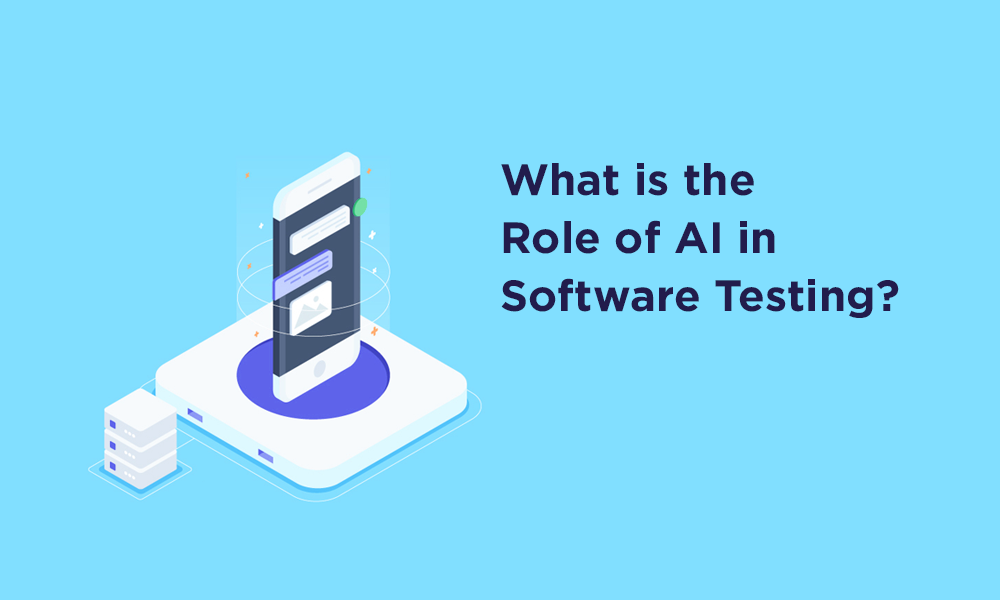Not only is artificial intelligence transforming multiple sectors, but it is changing many aspects of our daily lives. Therefore, it has come as no surprise that Artificial Intelligence has been introduced into software testing. AI can be defined as the ability of software to analyze and interpret data so that it can automate processes in more flexible, and intelligent ways. This practice is continuously improved upon as computers learn from and modify their responses based on their interactions and experiences. It essentially performs mundane tasks in a much more efficient way than humans can, and AI is constantly improving the methods used and it produces reports of code quality.
How Is Ai Boosting Efficiency in Software Testing?
Software testing is always being updated to increase speed and reach a higher level of optimization, but the traditional methods cannot keep up to maintain progress. Without using AI in software testing, the alternative method is for testers to request the system to run thousands of cases which is a huge workload on the system. Testers have to wait for updated results, and tests inevitably line up and create bottlenecks, causing delays. This can be solved with AI through the following ways to boost efficiency:
• Automating writing test cases
Instead of running a large test suite to detect a minor bug, for example, AI could instead offer calculated test cases that save a lot of time and are easy to monitor. Writing test cases takes a huge amount of time for developers, especially writing a case that will produce the specific data that is needed. But for AI, this entire process can be completed in seconds.
• Automating API test generation
API stands for application programming interface which is a concept that applies everywhere in computing. It defines interactions between multiple software applications or mixed hardware-software intermediaries, and API evaluation allows measuring the quality of interactions between the different programs that communicate with databases, servers and use various protocols.
The purpose of testing is to assure the connection between different programs is stable, all requests are processed correctly, and the end-user can get a correct output after a particular interaction. API testing automation allows for multiple test cases, so the functionality of third-party tools can be evaluated. It is through AI that this evaluation process can be made efficient. AI analyzes the functionality of the connected applications, detects any problems, and helps to create test cases. It is fast-paced and reliable.
• Fixing problems to continue progress
Selenium is a portable framework for testing web applications. It is open-source and provides a playback tool for running tests without needing to learn a test scripting language. However, Selenium tests are not perfect. The tests are hugely time-consuming, complex, and often a small technical issue can lead to the loss of all progress from all the test cases.
These issues do not occur with AI. It is Artificial Intelligence that can identify broken tests and repair them instantly. It will find a solution to maintain test case progress. Not only does it fix a failing test but AI defines the cause of the failure using its heuristics. Moreover, it has smart recommendations - derived from the collected system data - for the optimization of unstable tests.
• Visual validation automation testing
Visual validation testing is key to execute; it evaluates the tests to see if the user interface is displayed properly to the end-user. The goal of the test is to check each user interface element that appears in the correct position and is the desired size, shape, color, etc.
The automation process of visual testing can be difficult because there are countless scenarios of potential bugs. There is a lot of information to keep in mind for the testers, most importantly the testers are required to consistently consider the end users’ mindset and view the user interface with the end users’ eyes. This is challenging and mistakes are inevitably made.
AI precisely analyzes the environment in which the application runs, this includes operating systems, browsers, hardware requirements. Then, it determines what user interface standards are applicable.
• Predictive analysis
Companies are collecting masses of customer and application data, but it is intimidating to navigate what to do with this data. If you can understand the data you are collecting, you can change your business to suit the specific needs of your customer, this will result in success.
Artificial Intelligence can use the existing customer and analytics data to determine exactly how users’ needs and browsing habits will evolve. This is most useful for software testing; it allows testers and developers to offer better service quality by moving past the current growing users’ standards. AI can increasingly provide precise predictions on user behavior.
There is a growing need for AI because we are using complex systems. Additionally, there is a growing rise in customers’ demands and therefore the traditional methods (that involve testers following a static checklist to monitor user activities) simply cannot keep up with new innovations and technology. We are always collecting data, and testers need to use this data efficiently when testing software and both AI and machine-based intelligence are the solutions to manage this data. Using AI, we can expect speed and precision.


